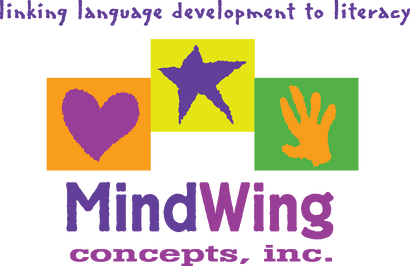Secure Checkout. FREE SHIPPING for Continental U.S. Orders over $60.
Menu
-
- Home
-
About Us
-
The Approach
-
Linking Language & Literacy
-
MindWing Learning
-
Learning Resources
-
SHOP
-
Blog
-
- About MindWing
- Our People
- Contact Us
- Your Account
- Login
-
United States (USD $)
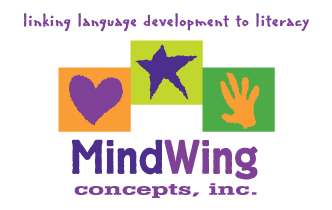
Secure Checkout. FREE SHIPPING for Continental U.S. Orders over $60.

Tech Tuesday/Summer Study Series: Because and So Science
July 15, 2019
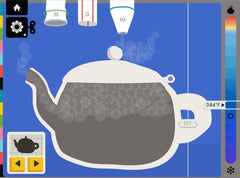 For July’s entry in the “Summer Study Series,” we’ll be looking at some cool connections to the science curriculum in addressing the macrostructure and microstructure of language. Our posts this summer are summarizing recent research related to narrative and expository language and Story Grammar Marker®/ThemeMaker® to give you some scientific thought for summer. To set the tone, there are some natural connections between the SGM® and ThemeMaker® methodologies and using science content with students. Narrative and expository elements give a framework for summarizing story and information, elaborating, focusing on main ideas and reducing the load on working memory by providing a scaffolded structure. The scientific method itself, moving from observation (Character/Setting), planning and hypothesizing, following experimental steps, and developing a conclusion, can be reframed using the Story Grammar Marker® as is demonstrated in the original SGM® manual...
For July’s entry in the “Summer Study Series,” we’ll be looking at some cool connections to the science curriculum in addressing the macrostructure and microstructure of language. Our posts this summer are summarizing recent research related to narrative and expository language and Story Grammar Marker®/ThemeMaker® to give you some scientific thought for summer. To set the tone, there are some natural connections between the SGM® and ThemeMaker® methodologies and using science content with students. Narrative and expository elements give a framework for summarizing story and information, elaborating, focusing on main ideas and reducing the load on working memory by providing a scaffolded structure. The scientific method itself, moving from observation (Character/Setting), planning and hypothesizing, following experimental steps, and developing a conclusion, can be reframed using the Story Grammar Marker® as is demonstrated in the original SGM® manual...

Feelings Activities with Dr. Seuss “Cat in The Hat” and “Marco Comes Late”
February 27, 2019
 As you know, March 2nd is the birthday of Dr. Seuss. He was born right around the corner from our MIndWing office here in Springfield, MA. Yesterday, I visited the Springfield Library to get a copy of The Cat and The Hat so I could share a lesson suggestion related to feelings. Along with that book, I found a copy of Horton and the Kwuggerbugs and Other Lost Stories. These stories were originally published in Redbook magazine between 1950-1955. Charles Cohen, a collector of all things Seuss, put together four of these selections in this book. Following The Cat and The Hat activity is an SGM analysis of one of those stories: “Marco Comes Late”...
As you know, March 2nd is the birthday of Dr. Seuss. He was born right around the corner from our MIndWing office here in Springfield, MA. Yesterday, I visited the Springfield Library to get a copy of The Cat and The Hat so I could share a lesson suggestion related to feelings. Along with that book, I found a copy of Horton and the Kwuggerbugs and Other Lost Stories. These stories were originally published in Redbook magazine between 1950-1955. Charles Cohen, a collector of all things Seuss, put together four of these selections in this book. Following The Cat and The Hat activity is an SGM analysis of one of those stories: “Marco Comes Late”...

Teaching Perspectives with “Grumpy Groundhog”
January 22, 2019
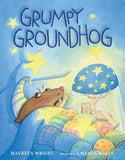 Last year, we got a lot of great feedback on our Groundhog Day blog, “6 Books and Activity for Groundhog Day.” Teachers seemed to especially like the last idea included in the blog, describing the groundhog’s burrow (from a List Map to a setting project, to sharing aloud). Check out last year’s blog if you haven’t seen it already! I came across another book presented in rhyme for Groundhog Day, Grumpy Groundhog written by Maureen Wright and illustrated by Amanda Haley. Below are a few ideas to use with this selection...
Last year, we got a lot of great feedback on our Groundhog Day blog, “6 Books and Activity for Groundhog Day.” Teachers seemed to especially like the last idea included in the blog, describing the groundhog’s burrow (from a List Map to a setting project, to sharing aloud). Check out last year’s blog if you haven’t seen it already! I came across another book presented in rhyme for Groundhog Day, Grumpy Groundhog written by Maureen Wright and illustrated by Amanda Haley. Below are a few ideas to use with this selection...

Teaching Aesop’s Fables and The Often Elusive “Lesson Learned” Using Story Grammar Marker
January 11, 2019
 Colleagues often ask how I would use the Story Grammar Marker® or Braidy the StoryBraid® with Aesop’s Fables. Fables are stories that teach a lesson and, because of that feature, are often part of academic curricula from grade 1 on. I decided to write a little bit about fables today because the lessons learned often relate to New Year’s Resolutions we all make! Most often fables involve animals as the characters but relate to human nature. Perspective taking, Theory of Mind and Lessons Learned are required to understand a fable. All of these are difficult for many students. The following shows the use of our Story Grammar Marker® icons to map “The Ants & The Grasshopper” fable for purposes of comprehension and expression. These icons—and our entire SGM® approach—will be 28 years old in 2019!...
Colleagues often ask how I would use the Story Grammar Marker® or Braidy the StoryBraid® with Aesop’s Fables. Fables are stories that teach a lesson and, because of that feature, are often part of academic curricula from grade 1 on. I decided to write a little bit about fables today because the lessons learned often relate to New Year’s Resolutions we all make! Most often fables involve animals as the characters but relate to human nature. Perspective taking, Theory of Mind and Lessons Learned are required to understand a fable. All of these are difficult for many students. The following shows the use of our Story Grammar Marker® icons to map “The Ants & The Grasshopper” fable for purposes of comprehension and expression. These icons—and our entire SGM® approach—will be 28 years old in 2019!...

Tech Tuesday: Interpreting Research on Narratives and Autism
April 20, 2018
 In this Autism Awareness and Acceptance Month, we turn our attention more specifically on our students and clients with unique social learning and language characteristics. A recent (2017) study by Westerveld and Roberts, The Oral Narrative Comprehension and Production Abilities of Verbal Preschoolers on the Autism Spectrum, has a number of implications that I would like to interpret in the context of tools available for narrative intervention. The study involved assessment of preschoolers’ narratives (notably an uninvestigated area for preschool students with autism, according to the article) via presentation of a fictional narrative and administration of comprehension questions and a retelling task. A large grouping within the sample did not produce a retelling that could be analyzed, but the 19 that did were assessed for length, semantic diversity, grammatical complexity and accuracy, intelligibility, inclusion of critical events, and narrative stage. The article notes that most of the research on spontaneous language of preschoolers with autism has focused on free play, rather than the ability to pull language together into narratives...
In this Autism Awareness and Acceptance Month, we turn our attention more specifically on our students and clients with unique social learning and language characteristics. A recent (2017) study by Westerveld and Roberts, The Oral Narrative Comprehension and Production Abilities of Verbal Preschoolers on the Autism Spectrum, has a number of implications that I would like to interpret in the context of tools available for narrative intervention. The study involved assessment of preschoolers’ narratives (notably an uninvestigated area for preschool students with autism, according to the article) via presentation of a fictional narrative and administration of comprehension questions and a retelling task. A large grouping within the sample did not produce a retelling that could be analyzed, but the 19 that did were assessed for length, semantic diversity, grammatical complexity and accuracy, intelligibility, inclusion of critical events, and narrative stage. The article notes that most of the research on spontaneous language of preschoolers with autism has focused on free play, rather than the ability to pull language together into narratives...
Clifford’s Valentine’s Day Character Activity
February 12, 2018

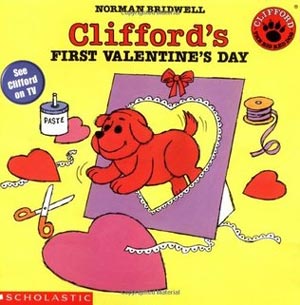 Norman Bridwell’s Clifford books are, of course, very popular with preschool and early elementary school-aged students. If you’re looking for a quick activity to reinforce the Character icon for Valentine’s Day for the younger set, pick up a copy of Clifford’s First Valentine’s Day or Clifford’s Valentines.
Norman Bridwell’s Clifford books are, of course, very popular with preschool and early elementary school-aged students. If you’re looking for a quick activity to reinforce the Character icon for Valentine’s Day for the younger set, pick up a copy of Clifford’s First Valentine’s Day or Clifford’s Valentines.
